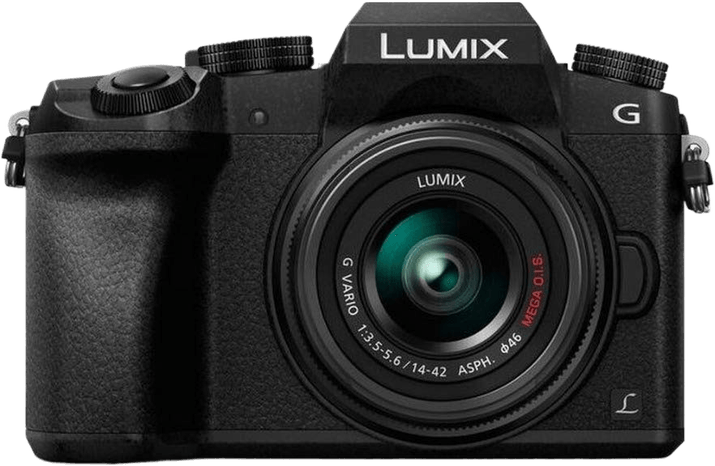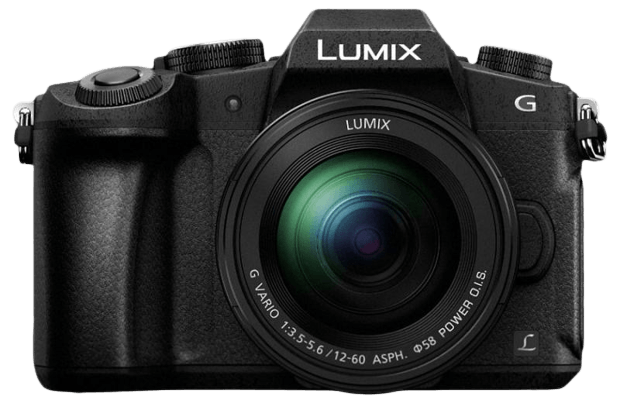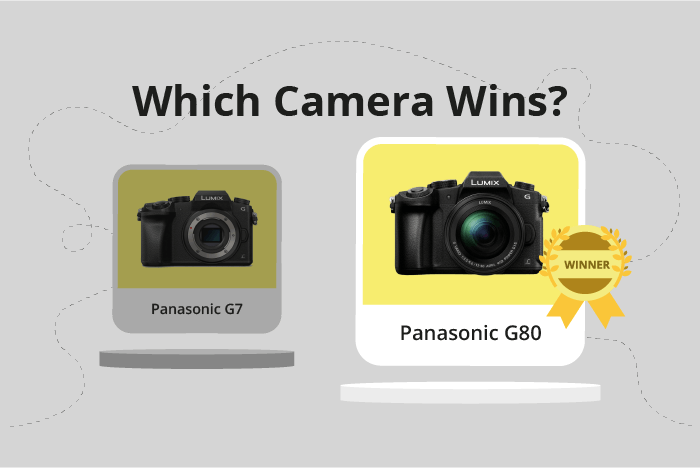Panasonic Lumix DMC-G7 vs Lumix DMC-G80 Comparison
Panasonic Lumix DMC-G7

Panasonic Lumix DMC-G80

The Panasonic Lumix DMC-G80 outperforms the DMC-G7 with a score of 58/100 compared to the G7’s 52/100. Both cameras are mirrorless and were released one year apart, with the G7 in 2015 and the G80 in 2016. They share similarities in size, with the G7 measuring 125 x 86 x 77mm and the G80 slightly larger at 128 x 89 x 74mm.
The G80 has a higher score due to its overall better performance and features. It costs $100 more than the G7, which launched at $799. However, the G7 has a slight advantage in weight, being lighter at 410g compared to the G80’s 505g.
Taking all factors into consideration, the Panasonic Lumix DMC-G80 is the superior camera, offering better performance and features. The G7, while lighter, does not match up to the capabilities of the G80.
Panasonic Lumix DMC-G7 vs Lumix DMC-G80 Overview and Optics
The Panasonic Lumix DMC-G80 outperforms the Panasonic Lumix DMC-G7 in optics, scoring 57/100 compared to the G7’s 51/100. Both cameras share several common specifications, such as 16-megapixel resolution, CMOS sensor type, Micro Four Thirds sensor size, and Micro 4/3 lens mount.
The G80 surpasses the G7 with its faster shooting speed of 9 frames per second (fps) compared to the G7’s 7 fps. This higher shooting speed enables the G80 to capture fast-moving subjects more effectively. Another advantage of the G80 is its image stabilization feature, which the G7 lacks. Image stabilization helps reduce camera shake, resulting in sharper images, especially in low-light situations or when using longer focal lengths.
On the other hand, the G7 has a higher DXOMARK score for its sensor, with a rating of 75 compared to the G80’s 71. This indicates that the G7’s sensor may deliver slightly better image quality in some situations. However, the G7’s unspecified processor may not be as efficient as the G80’s Venus Engine processor, which could affect the overall performance.
Taking these factors into account, the Panasonic Lumix DMC-G80 emerges as the superior camera in terms of optics, with its faster shooting speed and image stabilization features. The G7, although having a slightly better DXOMARK score for its sensor, falls short in other aspects and does not offer the same level of performance as the G80. Therefore, the Panasonic Lumix DMC-G80 is the better choice for those seeking a camera with strong optical capabilities.
Panasonic Lumix DMC-G7 vs Lumix DMC-G80 Video Performance
The Panasonic Lumix DMC-G7 emerges as the winner in video capabilities with a score of 83/100, while the Panasonic Lumix DMC-G80 receives a score of 56/100, showing a difference of 27 points. Both cameras share some common specifications, such as 4K video resolution and maximum video dimensions of 3840 x 2160 pixels.
The DMC-G7 outperforms the DMC-G80 in several aspects. Firstly, it has a higher maximum video frame rate of 60fps, which ensures smoother and more fluid motion in videos compared to the DMC-G80’s 30fps. This is particularly useful for capturing fast-moving subjects or creating slow-motion footage. Additionally, the DMC-G7 includes built-in time-lapse functionality, allowing users to create stunning time-lapse videos without the need for extra equipment or software.
On the other hand, the DMC-G80 does not offer any significant advantages over the DMC-G7 in terms of video capabilities. Its lower maximum video frame rate and lack of built-in time-lapse functionality make it less versatile for video enthusiasts and professionals.
Taking all these factors into account, the Panasonic Lumix DMC-G7 is the clear winner when it comes to video capabilities. Its higher maximum video frame rate and built-in time-lapse functionality make it a more versatile camera for capturing high-quality video content. Meanwhile, the Panasonic Lumix DMC-G80 falls short in these areas, making it less attractive for those who prioritize video performance.
Panasonic Lumix DMC-G7 vs Lumix DMC-G80 Features and Benefits
The Panasonic Lumix DMC-G80 is the winner in this comparison with a feature score of 70 out of 100, while the Panasonic Lumix DMC-G7 scores 58 out of 100. Both cameras have a 3-inch touchscreen and flip screen, and neither has GPS. They also both feature WIFI connectivity but lack Bluetooth capabilities.
The G80 outperforms the G7 in several areas. Firstly, it has a higher feature score, indicating that it offers more advanced and useful features for photographers. Additionally, it has a more rugged design, providing better durability and protection against the elements. This makes it more suitable for outdoor and adventure photography.
On the other hand, the G7 has a higher screen resolution of 2,360,000 dots, compared to the G80’s 1,040,000 dots. This means that the G7’s screen is capable of displaying images with greater clarity and detail. However, this advantage may not be significant enough to sway photographers towards the G7, as the G80 still provides a solid viewing experience with its lower resolution screen.
The G80’s higher feature score and more durable design make it a better choice for those seeking a versatile camera with advanced features. While the G7 has a higher screen resolution, this advantage is not significant enough to outweigh the benefits offered by the G80. Therefore, the Panasonic Lumix DMC-G80 is the better camera in this comparison.
Panasonic Lumix DMC-G7 vs Lumix DMC-G80 Storage and Battery
The Panasonic Lumix DMC-G7 outperforms the Panasonic Lumix DMC-G80 in storage and battery, scoring 35/100 compared to the G80’s 21/100. Both cameras have one memory card slot and accept SD, SDHC, and SDXC memory cards. However, the G7 excels in battery life and charging capabilities.
The G7 offers 350 shots per battery charge, while the G80 provides 330 shots. Additionally, the G7 uses a DMW-BLC12E battery type and supports USB charging, making it more convenient for on-the-go users.
On the other hand, the G80 uses a lithium-ion battery, which might not provide any significant advantages over the G7’s battery. The lack of USB charging in the G80 is a clear drawback.
In comparing the storage and battery aspects, the Panasonic Lumix DMC-G7 is a better choice due to its longer battery life and USB charging option, while the G80 falls short in these areas.
Alternatives to the Panasonic Lumix DMC-G7 and Lumix DMC-G80
Are you still undecided about which camera is right for you? Have a look at these popular comparisons that feature the Panasonic Lumix DMC-G7 or the Panasonic Lumix DMC-G80:

